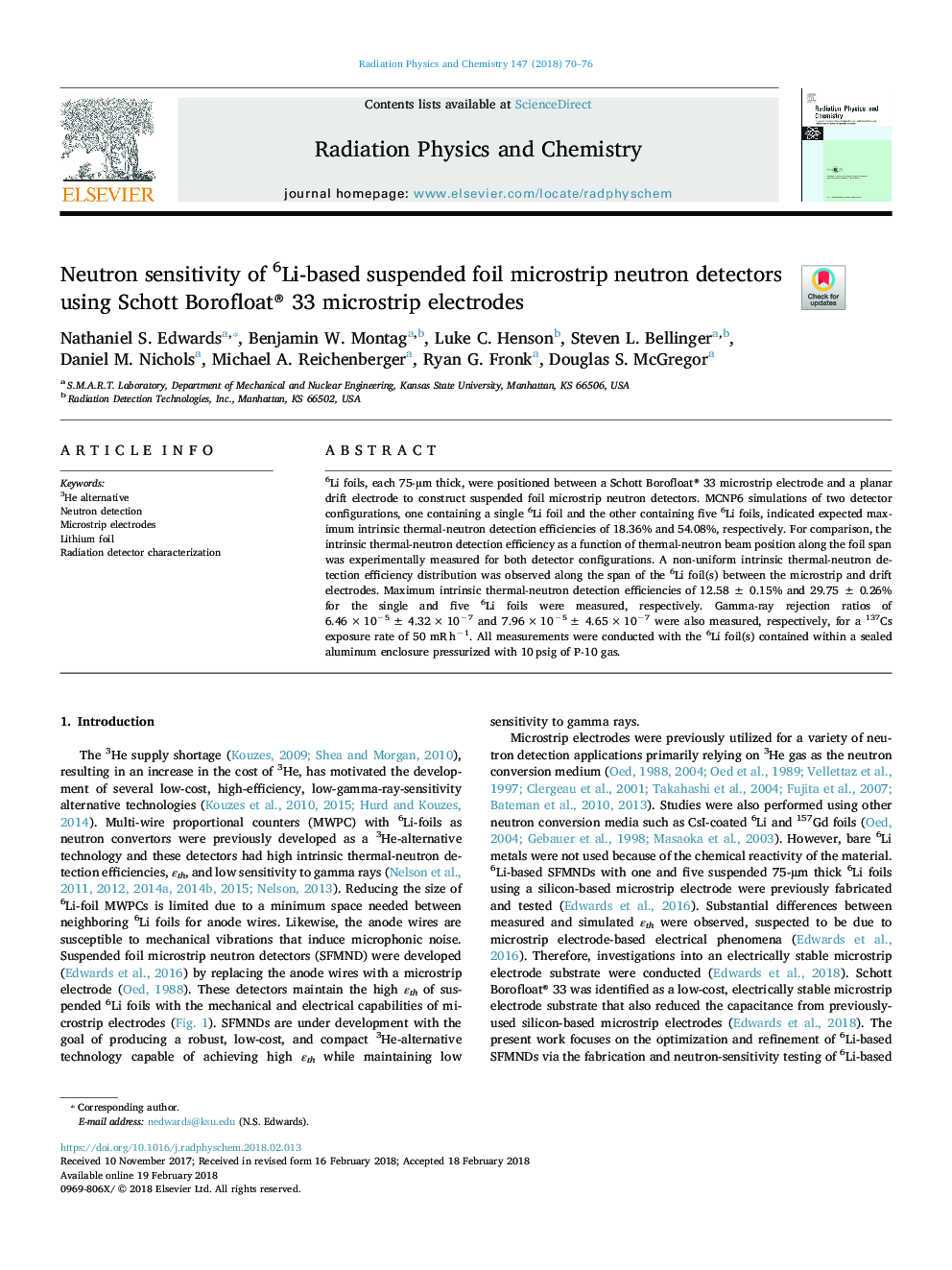| Article ID | Journal | Published Year | Pages | File Type |
|---|---|---|---|---|
| 8251392 | Radiation Physics and Chemistry | 2018 | 7 Pages |
Abstract
6Li foils, each 75-µm thick, were positioned between a Schott Borofloat® 33 microstrip electrode and a planar drift electrode to construct suspended foil microstrip neutron detectors. MCNP6 simulations of two detector configurations, one containing a single 6Li foil and the other containing five 6Li foils, indicated expected maximum intrinsic thermal-neutron detection efficiencies of 18.36% and 54.08%, respectively. For comparison, the intrinsic thermal-neutron detection efficiency as a function of thermal-neutron beam position along the foil span was experimentally measured for both detector configurations. A non-uniform intrinsic thermal-neutron detection efficiency distribution was observed along the span of the 6Li foil(s) between the microstrip and drift electrodes. Maximum intrinsic thermal-neutron detection efficiencies of 12.58â¯Â±â¯0.15% and 29.75â¯Â±â¯0.26% for the single and five 6Li foils were measured, respectively. Gamma-ray rejection ratios of 6.46â¯Ãâ¯10â5 ±â¯4.32â¯Ãâ¯10â7 and 7.96â¯Ãâ¯10â5 ±â¯4.65â¯Ãâ¯10â7 were also measured, respectively, for a 137Cs exposure rate of 50 mRâ¯hâ1. All measurements were conducted with the 6Li foil(s) contained within a sealed aluminum enclosure pressurized with 10â¯psig of P-10 gas.
Keywords
Related Topics
Physical Sciences and Engineering
Physics and Astronomy
Radiation
Authors
Nathaniel S. Edwards, Benjamin W. Montag, Luke C. Henson, Steven L. Bellinger, Daniel M. Nichols, Michael A. Reichenberger, Ryan G. Fronk, Douglas S. McGregor,
